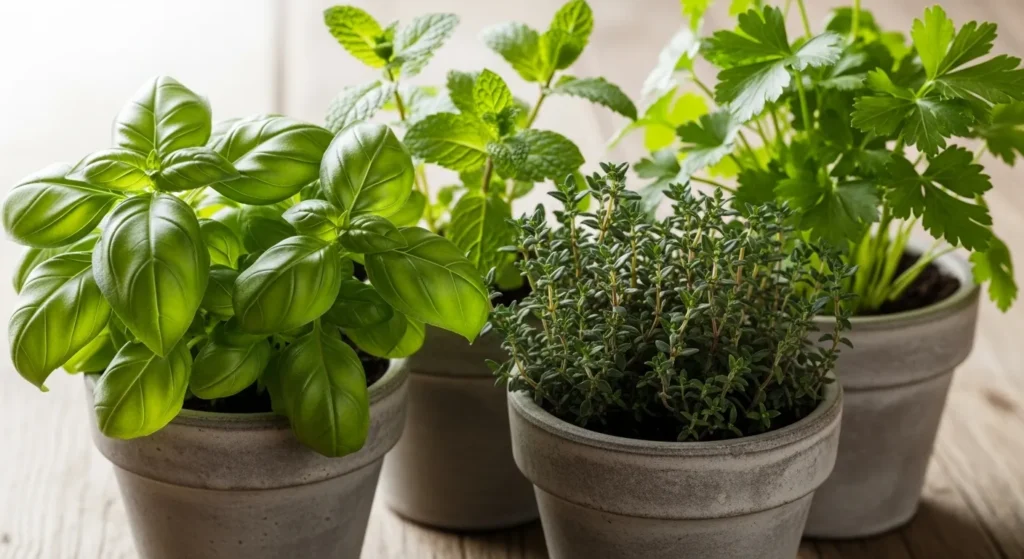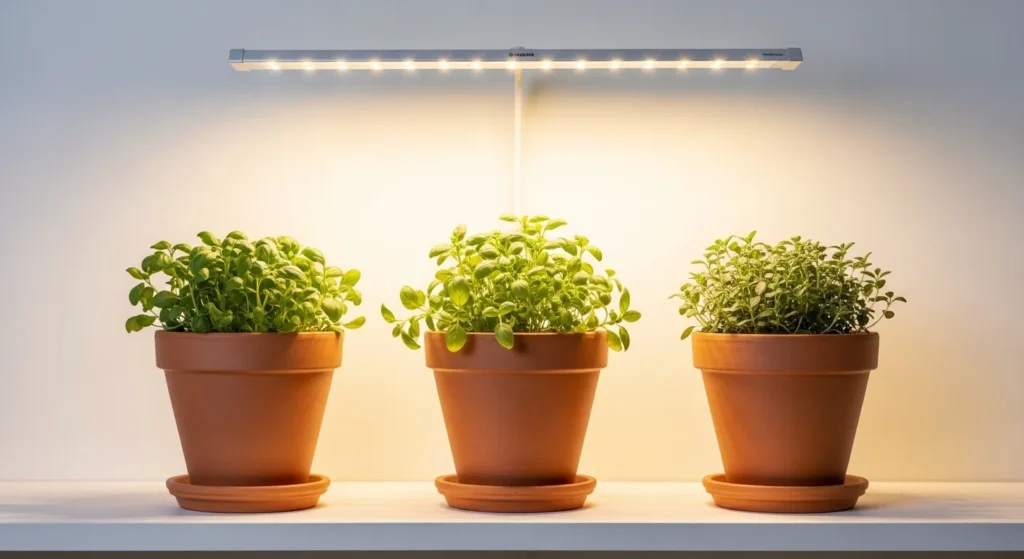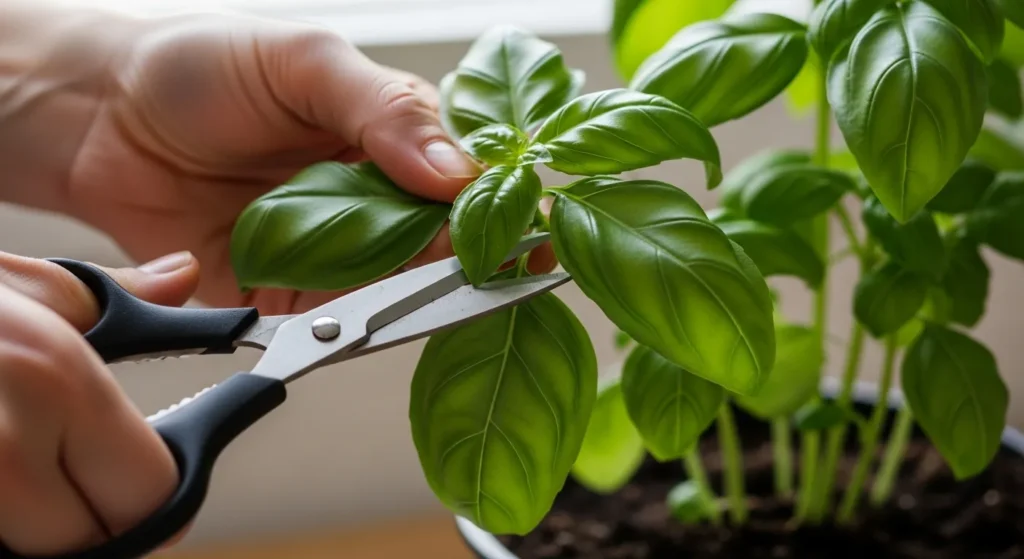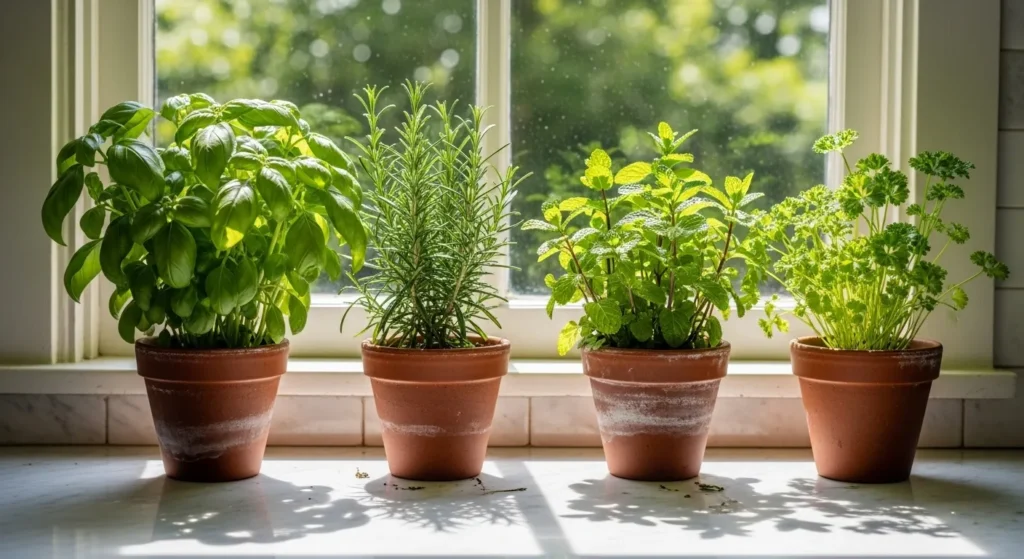Growing herbs indoors gives you fresh flavors all year. You can snip leaves right from your kitchen. This guide covers the basics to help you start. It draws from top advice to make sure your plants thrive.
Why Grow Herbs Indoors?
You save money on store-bought herbs. Homegrown ones taste better. They add green to your space. Many herbs help with cooking and health. For example, basil aids digestion. You control what goes into them. No pesticides if you choose.
- Pick herbs you use often.
- Start small to build skills.
- Enjoy the scent in your home.
Best Herbs for Indoor Growth
Choose herbs that do well inside. They need less space than outdoor plants. Start with these for success.
Easy Herbs for Beginners
- Basil: Grows fast. Likes warmth. Use in pasta or salads.
- Chives: Mild onion taste. Good for eggs or soups.
- Mint: Spreads quick. Great for teas. Keep it alone to avoid takeover.
- Parsley: Adds fresh notes to dishes. Tolerates some shade.
- Thyme: Hardy. Suits meats or stews.
Herbs That Need More Care
- Rosemary: Prefers dry soil. Use for roasts.
- Oregano: Strong flavor. Good in sauces.
- Cilantro: Bolts in heat. Plant often for steady supply.
- Sage: Avoid overwater. Pairs with poultry.
Avoid dill or fennel. They grow too tall or need more sun. Match herbs to your light and space.

For more on plants that handle low light, check our post on low-light plants that thrive in dark rooms.
Set Up Your Indoor Herb Garden
Get the right spot and tools. This step prevents common fails.
Pick a Location
Find a sunny window. South-facing is best for 6 to 8 hours of light. East or west works for some herbs. Avoid drafts or heat vents. Kitchens offer humidity from cooking.
If light is low, use grow lights. LED ones mimic sun. Run them 12 to 14 hours a day.
Choose Containers and Soil
Use pots with holes for drainage. Terra cotta lets air in. Size them 6 inches deep for most herbs. Add rocks at the bottom if needed.
Fill with potting mix that drains well. Add compost for nutrients. Skip garden soil. It packs tight and holds bugs.
Group like herbs. Mint with basil. Rosemary with thyme. They share water needs.
For water-based setups, try hydroponics. See our hydroponic gardening home beginner guide.

Daily Care for Healthy Herbs
Keep things steady. Herbs need balance.
Water and Humidity
Check soil daily. Water when the top inch feels dry. Use your finger to test. Overwater causes rot. Let it drain fully.
Most like 65 to 70 degrees F by day. Drop to 55 at night. Basil hates cold below 50 F.
For dry air, mist leaves or use a pebble tray with water. Good air flow stops mold. A small fan helps.
Feed Your Plants
Fertilize every two weeks. Use half-strength liquid for houseplants. Too much weakens flavor. Organic options work well.
Turn pots weekly for even growth.
In winter, ease up on water. Plants grow slower. Link to our winter plant care tips for indoor houseplants.
How to Harvest and Use Your Herbs
Cut often to keep plants bushy. This boosts yield.
- Start when plants reach 6 inches.
- Snip tops for soft herbs like basil. Take a third at most.
- For woody ones like rosemary, cut stems near the base.
- Harvest in morning for best taste.
Dry extras by hanging bundles. Or freeze in ice cubes. Use fresh in salads or soups.
Common question: Do indoor herbs taste like outdoor ones? Yes, but sun boosts flavor. Grow lights help close the gap.

Common Problems and Fixes
Watch for issues early.
- Yellow leaves: Too much water. Let soil dry.
- Leggy stems: More light needed. Add a bulb.
- Pests like aphids: Rinse with water. Use neem oil if bad.
Repot every year in spring. Use fresh soil.
For plant pairings, see our companion planting basics guide.
Final Tips for Success
Start with three herbs. Track what works. Adjust as you go. Fresh herbs cut salt in meals. They support health goals. For more, visit sites like Bonnie Plants.

